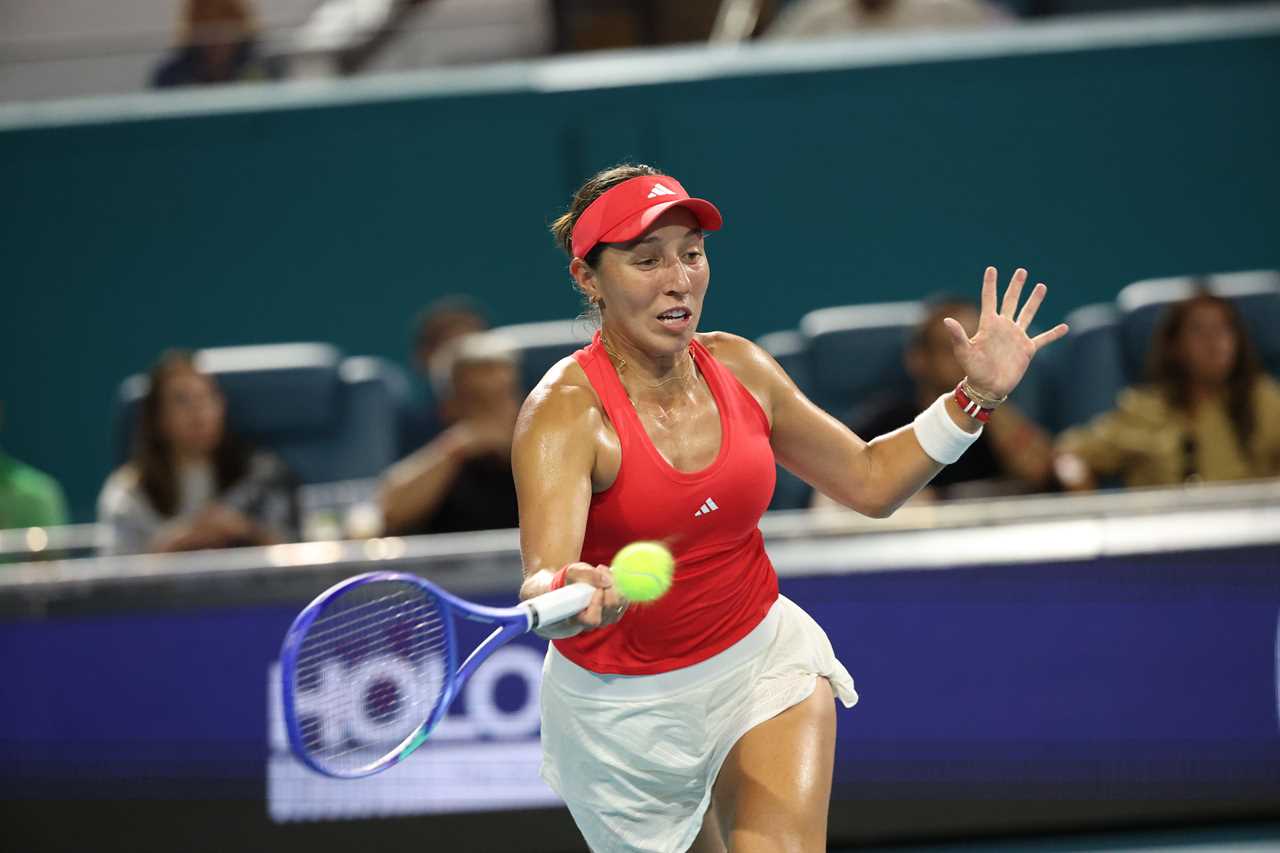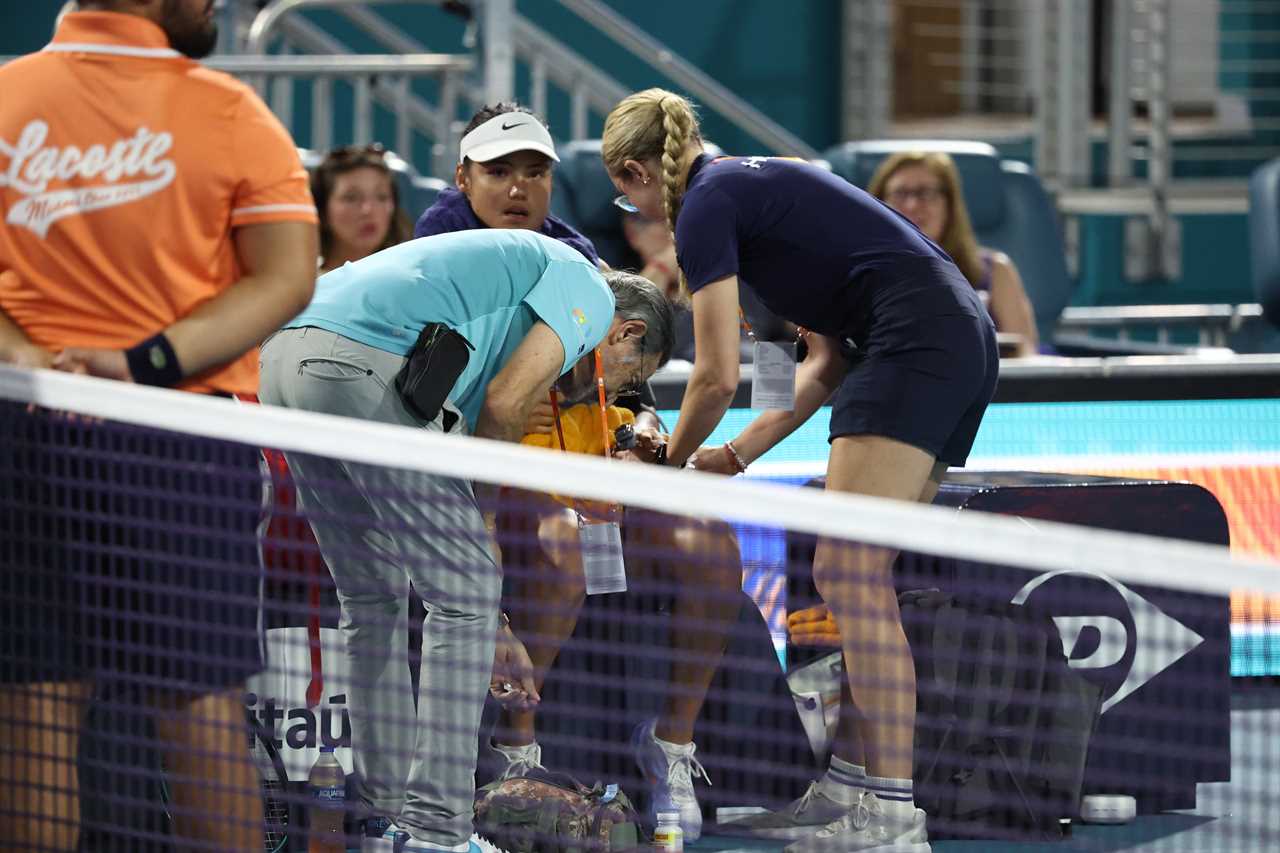
Quarter-Final Showdown Highlights Struggle
Emma Raducanu's impressive run at the Miami Open came to an unexpected halt after a strenuous match against Jessica Pegula. The quarter-final clash extended over two and a half hours, culminating in a 6-3, 6-7 (3), 6-2 victory for Pegula, who is the tournament's fourth seed.
Dizziness Forces Medical Intervention
During the intense second set, Raducanu experienced a sudden bout of dizziness, raising immediate health concerns. Medical staff attended to her on court, and she underwent a blood test before deciding to continue the match. Despite the discomfort, the 22-year-old managed to play the decisive third set, albeit with visible signs of strain.
Raducanu Reflects on Her Performance
In the aftermath of her defeat, Raducanu shared her feelings about the challenging conditions. "I just felt really dizzy. I felt faint," she admitted. She attributed her condition to the high humidity, prolonged matches, and the physical demands of long rallies. "There were long rallies and heavy conditions," Raducanu explained, highlighting the factors that may have contributed to her health scare.
Looking Ahead: Future Plans Under Review
Following her exit from the Miami Open, Raducanu is taking time to reassess her upcoming tournament schedule. "I think I need to just take a beat and kind of just re-evaluate what I'm doing," she stated. The young British star is contemplating her next steps to ensure her well-being and maintain her competitive edge after a demanding season.

Coaching Changes Add to Uncertainty
Raducanu's recent decision to part ways with her coach, Vladimir Platenik, has added another layer to her current situation. Their split came shortly before the tournament, after just two weeks of collaboration. Platenik expressed understanding and support for Raducanu's choice, acknowledging the pressures she faces after her impressive 2021 US Open victory.
Platenik Comments on the Split
"I totally understand Emma, she's not in an easy position," Platenik told the BBC. He emphasized the immense expectations placed on Raducanu and her need to prioritize her mental and physical health. "She was not feeling okay, and that was her decision," he added, respecting her autonomy in making the tough choice to end their professional relationship.
Looking Back at a Promising Campaign
Despite the disappointing end, Raducanu's performance in Miami showcased the talent that made her a US Open champion. Her resilience and skill during the tournament highlighted her potential to reclaim top form in future competitions. Fans and followers will be keen to see how she navigates her recovery and plans her comeback in the weeks ahead.
Support From the Tennis Community
The tennis world has expressed support for Raducanu as she takes time to recover and plan her next moves. Her journey has been closely watched since her remarkable rise, and this latest challenge underscores the pressures faced by young athletes at the highest levels of sport.

What's Next for Raducanu?
As Raducanu evaluates her options, the tennis community awaits her decision on how she will proceed. Whether she chooses to take a break or jump into her next tournament, fans remain optimistic about her ability to overcome these hurdles and continue her ascent in the tennis world.
Frequently Asked Questions
How important is diet and nutrition in the training of an elite tennis players?
Tennis players are no different. Nutrition and diet is vital to any athlete who wants to perform at their best. An appropriate diet helps support intensive training. It provides the energy needed, aids in recovery, and lowers the risk for injury. A balanced diet for elite players includes carbohydrates, proteins and fats along with essential vitamins, minerals and nutrients. The importance of hydration cannot be overstated, as a healthy fluid balance is vital to maintain concentration and prevent fatigue.
What role is video analysis in training the best tennis players?
Video analysis is an essential tool in the training and development of top tennis players. It allows detailed reviews of technique, tactic, opponent patterns and match play. Coaches and players utilize video analysis to dissect strokes, pinpoint areas for improvement, and strategize against future opponents. The video analysis helps to identify habits and tendencies which may be overlooked during intense competitions, and allows for more efficient and targeted practice sessions.
How can a tennis athlete balance intense training and school?
For aspiring tennis athletes, balancing intense training and academic commitments can be a challenge. Time management, prioritization skills and sometimes creative scheduling are required. Online learning and flexible academic programmes can help young athletes accommodate their demanding training schedules and travel plans. Support from family, coaches, and educational institutions also plays a crucial role in ensuring players can pursue their athletic ambitions without compromising their education.
Can someone begin playing tennis late, and still be a professional?
While it is more challenging, it is not impossible for someone to start playing tennis at a later age and still achieve professional status. Success will depend on the individual's athletic ability, work ethic, dedication, and access to quality coaching and competition. Late starters may need to undergo intensive, focused training. Although the road is more difficult, with talent and persistence, it's possible to reach a professional level.
How important is it for you to compete at junior tournaments if you want a career as a professional tennis player?
Junior tournaments are a vital step on the road to a tennis professional career. These tournaments allow young athletes to practice their skills and gain match experience against other players. They also help them to learn how to handle the pressure of competition. Junior tournaments provide a good stepping stone for players to move up to higher levels of competition. They also have an impact on their ranking, their visibility in front of coaches and sponsors, as well as the overall development they make as athletes.
Statistics
- Engaging in structured video analysis sessions has been shown to improve a player's tactical decision-making by approximately 35%.
- Statistical trends indicate that top tennis players usually have at least 5 people in their support team, including coaches, fitness trainers, and physiotherapists.
- Approximately 70% of a professional tennis player's training time is devoted to developing technique and on-court strategies.
- Nutritionists report that a tennis player's diet should consist of about 55-60% carbohydrates, 15-20% protein, and 20-25% fats during intense training periods.
- Research indicates that junior tennis players who compete in international tournaments gain significant psychological advantage and experience, with participation leading to a 50% better transition into professional rankings.
External Links
How To
How to Improve Your Tennis Serve
In order to develop a powerful serving technique, you must first master your grip. A Continental grip will increase your racket's speed and give you more control. Make sure you have the correct stance. This usually means standing 45 degrees away from the baseline. The toss is critical; practice tossing the ball high enough that you can hit it at full arm extension without reaching. As you swing the racket, use your entire body and not just the arm to generate power. The 'trophy pose,' with the racket back and elbow up, is a good checkpoint to ensure your serve technique is on track. To maximize racket head velocity, you should focus on a fluid, fluid motion. Make sure to snap the hand at the contact point. Consistent practice with these elements will lead to a more powerful serve.
 CricketBoxingFormula 1GolfHorse RacingPremier LeagueTennisPrivacy PolicyTerms And Conditions
CricketBoxingFormula 1GolfHorse RacingPremier LeagueTennisPrivacy PolicyTerms And Conditions
